Strokkur GeyserStrokkur Geyser is one of the most famous, albeit not a very big, geysir. It is located in Haukardalur, in the same geothermal field
as the now inactive "Great Geyser" whose regular activity stopped about a century ago, but resumed erupting mildly and irregularly after some
earthquake activity in the year 2000. During the past decades, Strokkur Geyser changed its former unpredictable activity into a fairly regular one,
with small eruptions lasting few seconds every few minutes. |
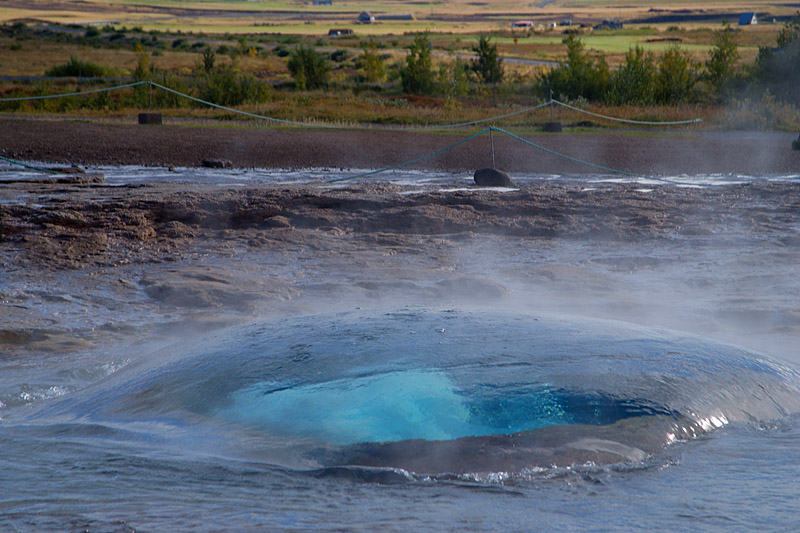 A large steam bubble suddenly rises through the geyser conduit (light blue) and lifts the water in the pond which, for an instant, forms a bubble roughly 2 metres in diameter. | 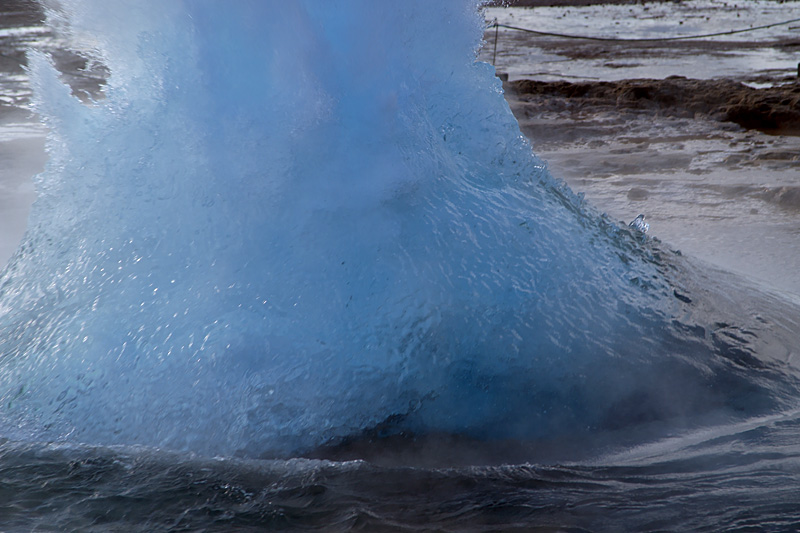 Then the steam breaks through the top of the bubble, which explodes and creates many jets of water droplets. In the pond a wave travels outwards. | 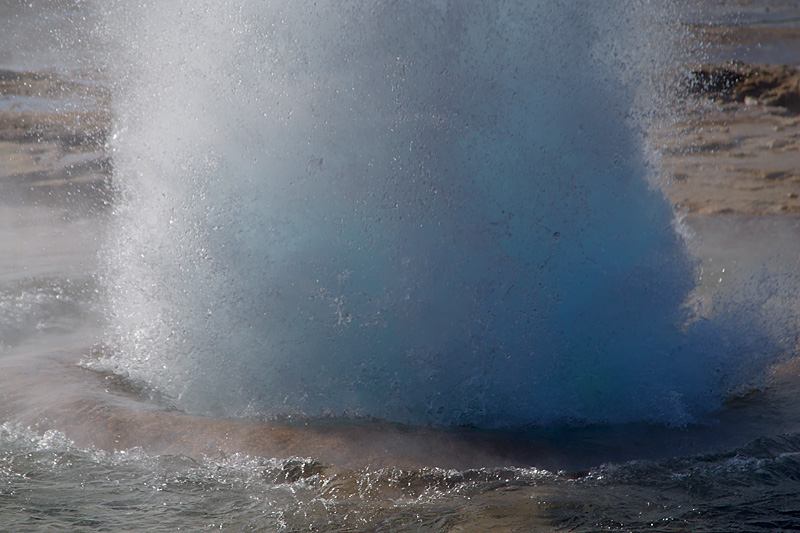 At the climax of the steam eruption, most of the water column is ejected from within the vent as more waves temporarily enlarge the pond's diameter. | 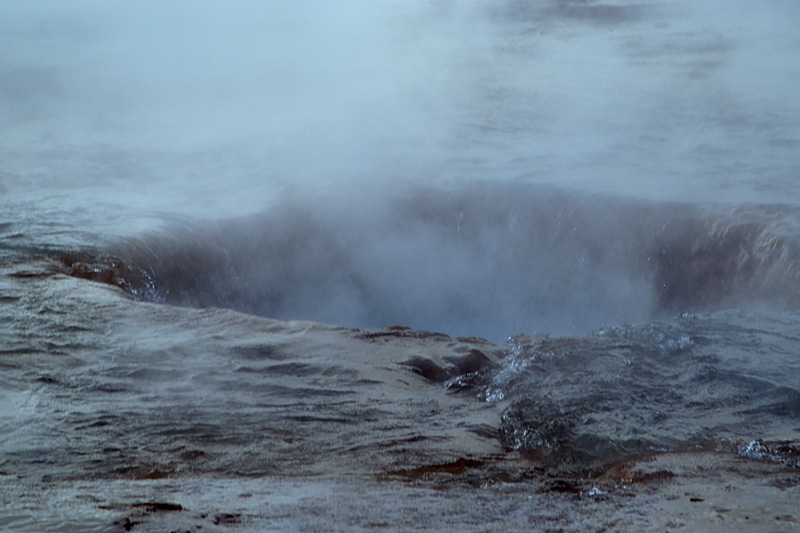 At the end of the eruption, which has lasted only a few seconds, most of the water flows back into the conduit, where it will heat up and finally erupt again. |
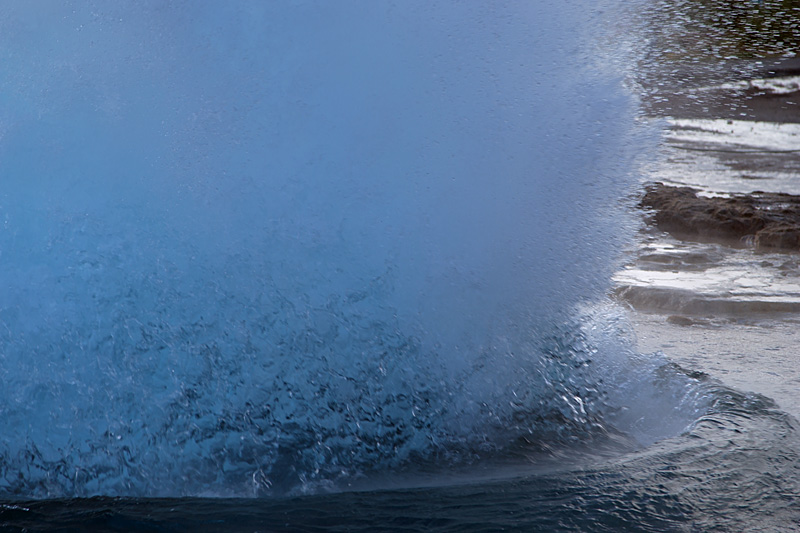 Sometimes a minor eruption occurs right after a bigger one: in this case the explosion occurs without the initial bubble surge. |  Wide angle view of the onset of an eruption: tourists in the background give the (small) scale. | 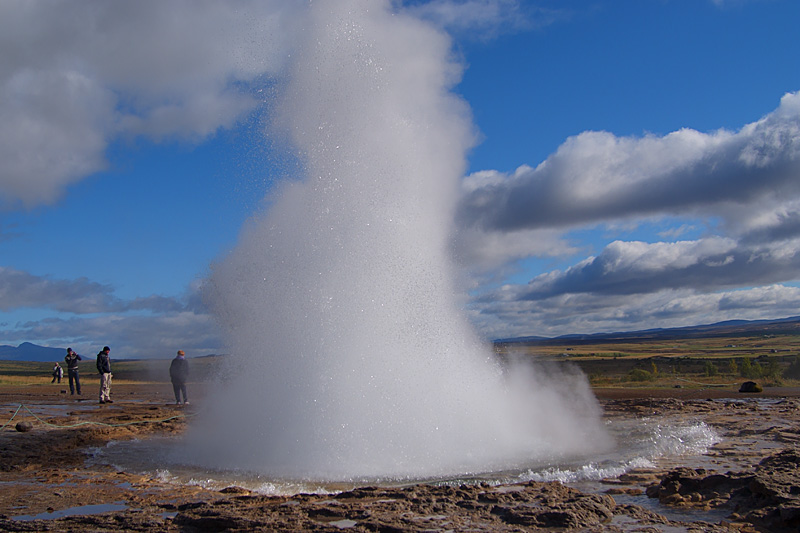 The column of steam mixed with water droplets rarely reaches higher than about 20 metres, well short of the 60 metres, the "Great Geyser" used to reach. | 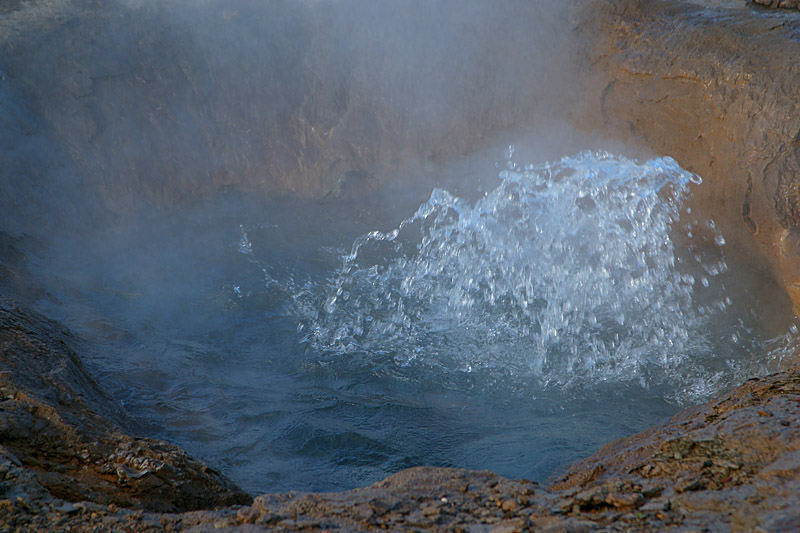 The geothermal field of Haukardalur is rich in thermal phenomena: a small pond with a permanent erupting spring, reaching about half a metre in height. |
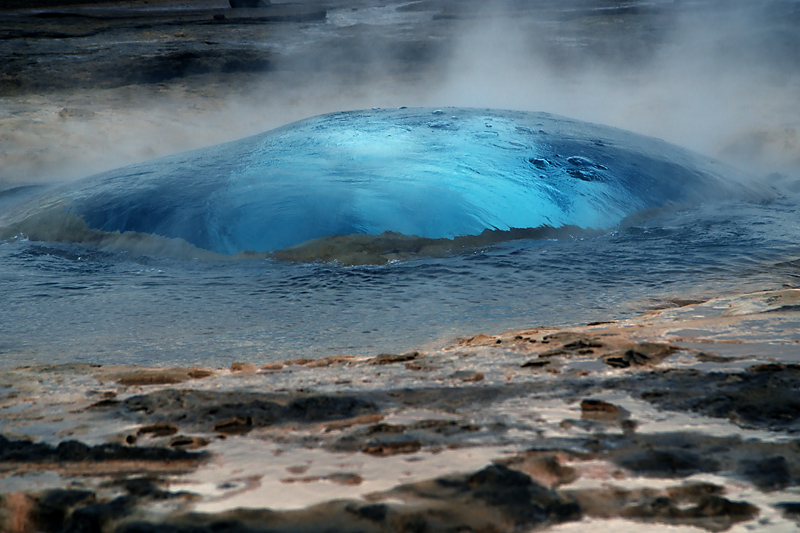 Another steam bubble uplifts the blue water of Strokkur Gayser. | 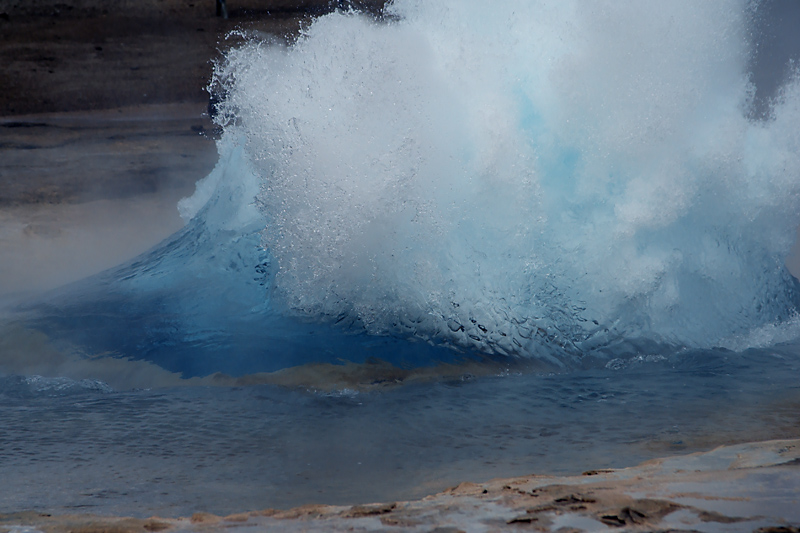 The steam explodes in a column of water and vapour. | 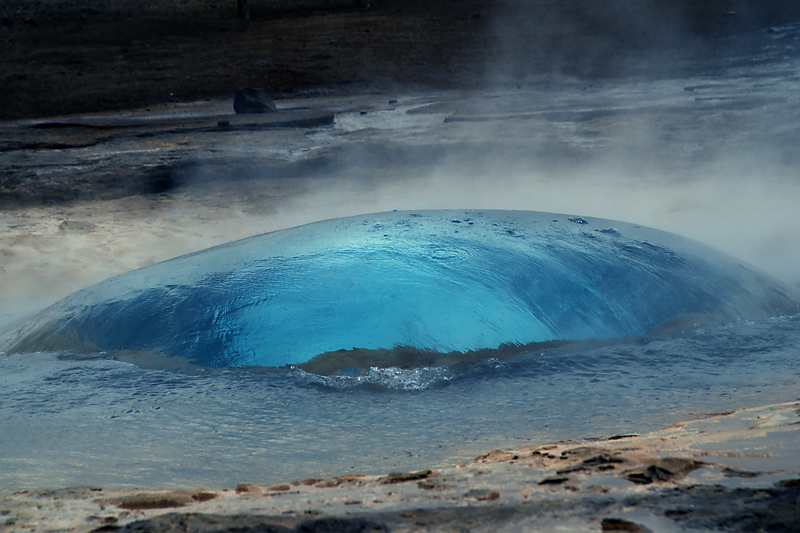 Note the first bubbles on the water surface. | 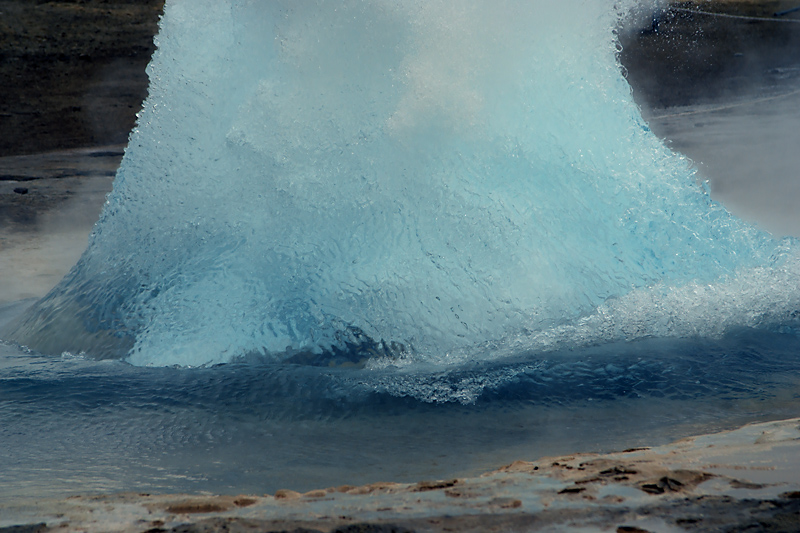 Explosion of steam in Strokkur Geyser. |
| Photos by Marco Fulle, 11 Sept 2007, midday, and 13 Apr 2010 (third row of photos). |